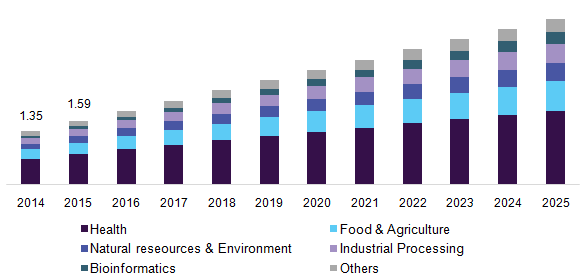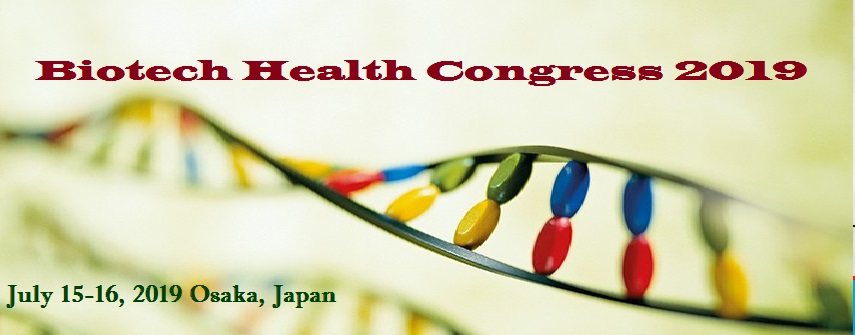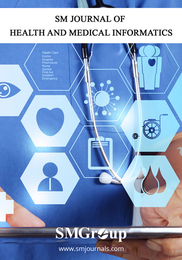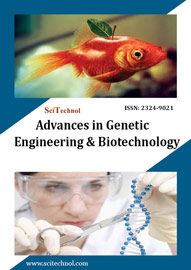Conference Series LLC LTD invites all the participants from all over the world to attend 2nd International Convention on Biotechnology and Health Care during July 15-16, 2019 at Osaka, Japan which includes prompt keynote presentations, Oral talks, Poster presentations, and Exhibitions.
Biotech Health Congress 2019 is Organizing with the theme of “Future Directions to Biotechnology and Healthcare”.
Importance
This Biotech Health Congress 2019 creates a platform for Policy-makers, Scientists, representatives and decision makers in Biotechnology to present their latest biotech research and learn about all the important developments in biotechnology and Healthcare research. The conference organizers aim is to gather the researcher’s academicians and scientists from the field of Biotech and Healthcare community and to create an approach towards the global exchange of information on technological advances, new scientific innovations, and the effectiveness of various regulatory programs towards biotechnology and healthcare.
Target Audience
Biotech Health Congress aims to bring together Experts from :
-
Academy and Research-Professors
-
Assistant Professors and Ph.D. Scholars
-
Biotechnology Associations and Societies
-
Biotechnology Business Entrepreneurs
-
Medical devices Manufacturing Companies
-
Directors, CEO’s of Organizations
-
CROs and clinical data management companies etc.,
Why to attend?
Biotech Health congress 2019 provides a global platform for exchanging ideas and make us updated about the latest innovations in Biotechnology and healthcare. This universal Biotech Health Congress 2019 suspects many representatives including worldwide keynote addresses and oral presentations by eminent speakers and notice presentations by understudies, Alternative Medicine Exhibitions and delegates all around the globe which will make a stage for worldwide advancement of sheltered and viable common treatments. It gives global systems administration and chances to joint efforts with overall organizations and businesses.
Biotechnology applies the knowledge of biology to enhance and improve the environment, health, and food supply. Biotechnology is a very huge field and its applications are used in a variety of fields of science such as agriculture,
healthcare, industrial, crop production, and environmental uses. But biotechnology is most important for its implications in health and medicine and has played a major role in agriculture by altering the
genes,
cloning various crops in order to provide better quality products of food to improve our lives.
Microbiology is the study of
microscopic organisms, such as bacteria, viruses, Achaea, fungi, and
protozoa. This discipline includes fundamental research on the
biochemistry, physiology,
cell biology, ecology, evolution and clinical aspects of
microorganisms, including the host response to these agents and its importance varies in each significantly, Some are responsible for a significant proportion of the diseases affecting not only humans but also plants and animals, while others are vitally important in the maintenance and modification of our environment. Still, others play an essential role in the industry, where their unique properties have been harnessed in the production of food, beverages, and
antibiotics. Scientists also have learned how to exploit microorganisms in the field of
molecular biology, which makes an enormous impact both industrially and medically.
Microbiology also encompasses
immunology, the study of the body’s ability to mount defenses against infectious microbes.
Cell biology is the academic discipline that studies the basic unit of living things, cells. Cells are the smallest independently functioning unit in the structure of an organism and usually consist of a nucleus surrounded by
cytoplasm and enclosed by a membrane.
Cell biology examines, on microscopic and molecular levels, the
physiological properties, structure,
organelles (such as nuclei and mitochondria), interactions, life cycle, division and death of these basic units of organisms. Cell biology research extends to both the great diversity of single-celled organisms, such as bacteria and the many specialized cells in multicellular organisms, such as animals and plants. The field of
cell biology traditionally has focused on questions concerning how the various organelles work and work together, how these cellular processes are regulated and how the various cells within the organism communicate with each other. Some sub-disciplines of cell biology are Active and Passive Transport, Cell Adhesion, cell division, cell signaling, and
cellular metabolism.
All organisms on Earth evolved from a common ancestor, so all organisms use
DNA as their
molecule of heredity.
Recombinant DNA techniques are also a cornerstone of the
biotechnology industry. At the chemical level, DNA is the same whether it is taken from a microscopic bacterium or a blue whale. As a result, DNA from different organisms can be “cut and pasted” together, resulting in “
recombinant DNA”. The ability to cut, paste, and copy molecules of DNA was not only a watershed moment for scientific research but spawned an entire industry built on
genetic engineering. The First successful product, a synthetic form of
human insulin produced by bacteria that were engineered to contain the
insulin gene. Today
recombinant DNA technology is used extensively in research laboratories worldwide to explore myriad questions about gene structure, function, expression pattern, regulation, and much more.
Stem cells also called tissue-specific or
somatic stem cell are undifferentiated cells that can turn into specific cells, as the body needs them.
Stem cells also show promise for treating some diseases that currently have no cure. Stem cells originate from two main sources:
adult body tissues and
embryos. Scientists are also working on ways to develop stem cells from other cells, using
genetic "reprogramming" techniques. Research on stem cells continues to advance knowledge about how an organism develops from a single cell and how healthy cells replace damaged cells in adult organisms. Stem cell research is one of the most fascinating areas of contemporary biology, but, as with many expanding fields of scientific inquiry, research on stem cells raises scientific questions as rapidly as it generates new discoveries.
Biochemistry, sometimes called
biological chemistry, is the study of chemical processes within and relating to living organisms. Biochemistry can be divided into three fields;
molecular genetics,
protein science, and
metabolism. Biochemistry has obvious applications in medicine, dentistry, and veterinary medicine. In food science, biochemists determine the chemical composition of foods, research ways to develop abundant and inexpensive sources of nutritious foods, develop methods to extract nutrients from waste products, and/or invent ways to prolong the shelf life of food products. In agriculture, biochemists study the interaction of
herbicides/insecticides with plants and pests. They examine the structure-activity relationships of compounds, determine their ability to inhibit growth, and evaluate the
toxicological effects on surrounding life. It also spills over into
pharmacology, physiology, microbiology,
toxicology, and
clinical chemistry.
Plant biotechnology describes in which scientific techniques are used to develop useful and beneficial plants.
Plant breeding is a lengthy process and the time required for
hybridization to the introduction of a new variety is at least eight to ten years.
Animal biotechnology is a recently revolutionized concept of
Biotechnology. It includes
Tissue culture,
Immunology, Genetics, Microbiology and
Biochemistry and many more. Genetically modified animal biotechnology can be used to improve our food supply and develop new medical treatments. Nonetheless, biotechnology has developed significantly in veterinary biologics vaccines and antibiotics. Researchers have done cloning on a number of different animals, including cows, pigs, goats, horses, mice, cats, dogs and many more.
Immunology is the study of the
immune system, which protects us from infection. There are three main ways in which the immune system contributes to disease: Activation,
Immunodeficiency, and
Hypersensitivity.
Immunotechnology is an important arm of biotechnology, constituting the industrial scale application of immunological procedures to produce vaccines, for mass immunization to prevent prevalent diseases and/or producing
immunological therapeutic agents to cure the afflicted. Production of protein vaccines has been in large-scale use for a long time and the current trend is to develop more specific DNA vaccines.
Environmental biotechnology is the branch of biotechnology that addresses environmental problems, such as the removal of
pollution, renewable energy generation or biomass production, by exploiting biological processes. Environmental Biotechnology gives a response to a chemical that helps to measure the level of damage caused or the exposure of the toxic or the pollution effect caused. It is using for purifying to Solid, liquid and gaseous wastes either by recycling to make new products so that the end product is less harmful to the environment.
Genetic engineering is the act of modifying the genetic makeup of an organism. Modifications can be generated by methods such as gene targeting,
nuclear transplantation,
transfection of synthetic chromosomes or viral insertion. Selective breeding is not considered a form of
genetic engineering. Genetic engineering is the act of modifying the genetic makeup of an organism. Modifications can be generated by methods such as gene targeting, nuclear transplantation, transfection of synthetic chromosomes or viral insertion. Selective breeding is not considered a form of genetic engineering.
Molecular Biology is a field of biology that studies the composition, structure, and interaction of cellular molecules such as
nucleic acid and proteins that carries out the biological processes that are essential for the cell’s functions and maintenance.
Molecular biology activity concerns the various systems of a cell, including the interactions between the different types of DNA, RNA and proteins. It has many applications like in gene finding, molecular mechanisms of diseases and its therapeutic approaches by cloning, expression, and
regulation of a gene.
Fermentation technology has been a long-favored organic process owing to its simplicity of reaction, high specificity, low costs, and flexibility of application. Fermentation’s applications area unit speedily breaching the orbit of foodstuffs like wine, cheese, bread, and beer, into high-value chemicals,
pharmaceutical ingredients, and food-related chemicals. Further, rising hydrocarbon costs and depleting fuel reserves have created a strong case for affordable and easy fermentation processes for manufacturing drop-in chemical replacements. “There has been a spurt in analysis efforts, each within the company and tutorial sector, driven mostly by fermentation applications among the energy and utilities, specialty chemicals, and prescribed drugs industries,” says the analyst of this analysis. “Energy - or a lot of specific, biofuels - has evinced sizeable interest in applying
fermentative techniques to provide cost-competitive
bioethanol.”
Agricultural biotechnology is a collection of scientific techniques used to improve plants, animals, and
micro-organisms. Advances in
plant biology were being applied to breed more productive and robust crops. Mechanization reduced the labor requirements of many agricultural processes, such as planting and harvesting. Under saffron network focus is on developing a tissue culture protocol for corm production of desired size, develop in vitro micro plants for cormlets production and develop complete
agro-technology for use of cormlets of small size, characterization of
microflora of rhizosphere associated with Saffron crop to develop consortia of beneficial microbes, for genetic improvement of Saffron and functional
genomics approaches in understanding the regulation of synthesis and accumulation of Apo carotenoids.
Public Health is the science of protecting and improving the health of the people and their communities. Public health professionals try to prevent problems from happening or recurring through implementing
educational programs, recommending policies, administering services and conducting research in contrast to
clinical professionals like doctors and nurses, who focus primarily on treating individuals after they become sick or injured. Public health also works to limit health disparities. A large part of public health is promoting healthcare equity, quality, and accessibility.
Healthcare is the set of services provided by a country or an organization for the treatment of the physically and the mentally ill. The flow of
irresistible infections puts little new-born children too youthful to possibly be inoculated in danger of dreariness and mortality, regularly requiring delayed
hospitalization. Inoculation against a scope of bacterial and viral sicknesses is an essential piece of transmittable illness control around the world.
The role of
healthcare professionals as being versatile is an important factor in hospital management. During their academic internships and training, most of the
hospital management professionals have exposures to all these functions. Functions and works in the hospital are usually rotated as well as shuffled. So over the duration of an entire career, a hospital management professional would have been trained and worked in just about every area of management. Also, hospital management administrators, members, and staff work with strict rules of accountability. Efficiency is a must in which all the various functions in the hospital have to be carried out very smoothly. Although technology plays a big part to help these professionals in a few areas; they also need to be resourceful and intuitively on many instances, even without the help of technology. Examples are through care and public relations with the patients as well as suppliers. It is the human element that is needed with these kinds of function and relations.
Nurses are responsible for assessing patients’ needs and diagnosing illnesses. As such, nurses are an integral part of the comprehensive standards of care and health promotion.
The World Health Organization (WHO) defines health promotion as “the process of enabling people to increase control over the determinants of health and thereby improving their health.” The three main tenets of health promotion are an advocate, enable and mediate. Nurses advocate on behalf of their patients and the community at large by supporting causes that help optimize health, such as non-profit organizations and educational campaigns.
Nurses enable or empower their patients by striving for equal access to
healthcare services. Race, gender and ethnicity are important factors to consider. Finally, to promote health for all citizens, nurses play the role of mediator between healthcare providers, governments, businesses, and the media. Collaboration between various institutions is the only way to ensure the health of a population.
The provision of high-quality, affordable,
health care services is an increasingly difficult challenge. Due to the complexities of health care services and systems, investigating and interpreting the use, costs, quality, accessibility, delivery, organization, financing, and outcomes of health care services is key to informing government officials, insurers, providers, consumers, and others making decisions about health-related issues.
Health services researchers examine the access to care, health care costs and processes, and the outcomes of health services for individuals and populations.
Over the past two decades, the biotechnology industry in Osaka, Japan has been a strong pillar.Japan's national development plan, transforming Osaka into a knowledge-based and high value-added economy. Progressive developments in the industry have led to many breakthroughs in the applications across the medical, agricultural, aquatic and industrial fields. Earning the reputation as the medical hub of Asia, a global leader in agriculture and one of the top five food exporters in the world, the Kingdom demonstrates strong competency in taking biotechnology further ahead, as well as raising the competitiveness and self-reliance of the country in the coming years.
Pharmaceutical products
Since its inception in 2005, the BIOTEC-Novartis International Pharmaceutical Drug Discovery Partnership has made many contributions to the exploration of potential uses of micro-organisms and natural compounds as active ingredients for innovative medicine. Owing to the success achieved over the past six years of collaboration, the two organizations extended the partnership for another 3 years to 2015
Under the Biotechnology Development Policy Framework 2012- 2021, the Japan government is a driving force in stimulating developments and fostering growth within the industry, in an effort to transform Osaka, Japan into the center of biotechnology in Asia. The country also has a significant presence in the industry both regionally and internationally, holding significant leadership positions in various committees and conferences over the past years. Across the Kingdom, there are over 165 emerging biotechnology firms. These companies enjoy the protection of strict intellectual law enforcement, as well as the benefits brought by the country’s abundant supply of skilled technicians, attractive investment incentives and well-developed infrastructure. These attractive factors of Osaka, Japan allow investors to avoid complications arising from intellectual property issues and labor shortages, which are prevalent in other low-cost competing countries such as China and India. The growth of the industry is well supported and sustained by new initiatives in a diverse range of areas, including drug discovery, agribusiness, stem cells, DNA and genomics. Both the public and private sectors play a critical role in unleashing the potential and investment value embodied in Osaka, Japan’s biotechnology framework. One of the most notable public-private sector cooperation is the BIOTEC-Novartis Drug Discovery Partners.

Biotechnology Applications in Osaka, Japan
Applications of biotechnology in Osaka, Japan include Agriculture (Green Biotechnology), Medicine (Red Biotechnology), Industry (White Biotechnology) and Marine/Aquatics (Blue Biotechnology).
Healthcare biotechnology
The global biologics market has expanded at a CAGR of 9.8 from 2007 to 2012, to €169b in 2012. This represents 18 of the total worldwide medicine sales in 2012. Of total biologics sales, 0.4 is contributed by biosimilars in 2012. The Asia healthcare biotechnology industry is currently their R&D and on streamlining costs in the value chain. Healthcare revenue increased by 7% to £10.0 million (2013: £9.4 million) and divisional operating profit increased by 15% to £3.4 million (2013: £3.0 million). The diagnostic activities continued the impressive performance reported at the half year and the aggregate number of diagnostic tests conducted increased by over 70% compared with 2013.


Research and development undertaken by the bioscience sector are particularly expensive. R&D tax credits are a valuable source of Government support for the sector not least because they stimulate innovation. Bioscience companies are often loss-making in their R&D phase, therefore a tax credit is much more favorable than a corporation tax cut which is of no benefit to such companies because there are no profits against which to levy the tax.

























